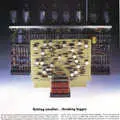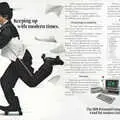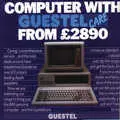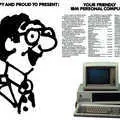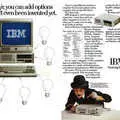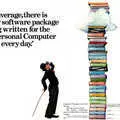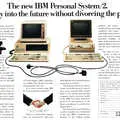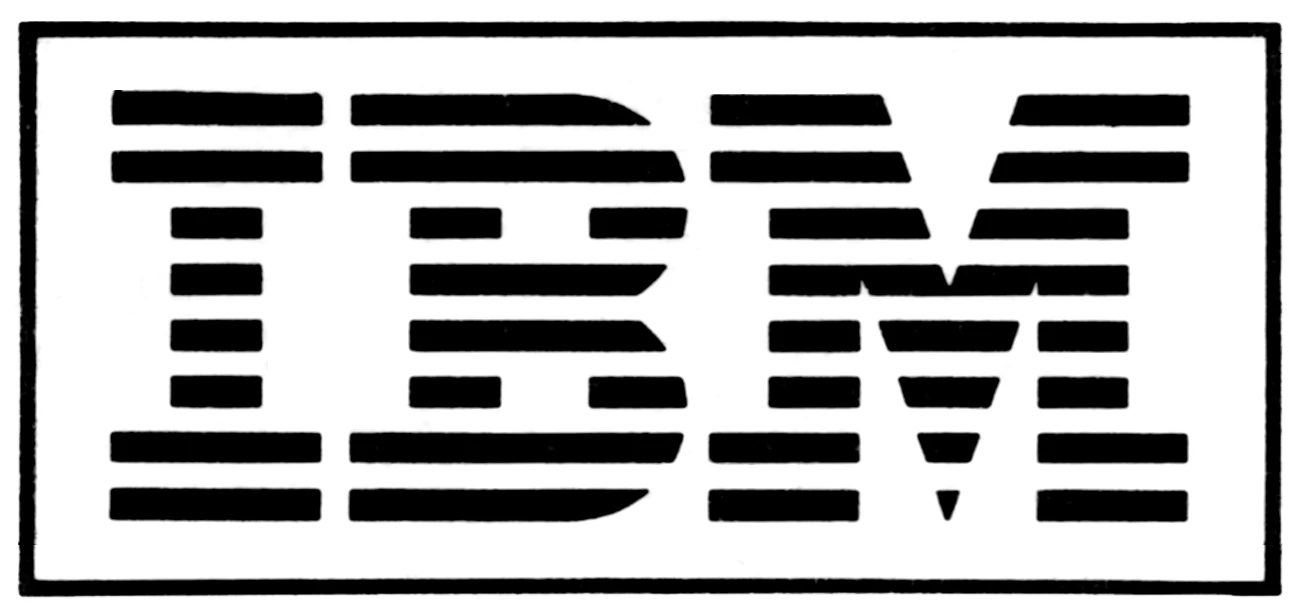
IBM Advert - May 1982
From Personal Computing
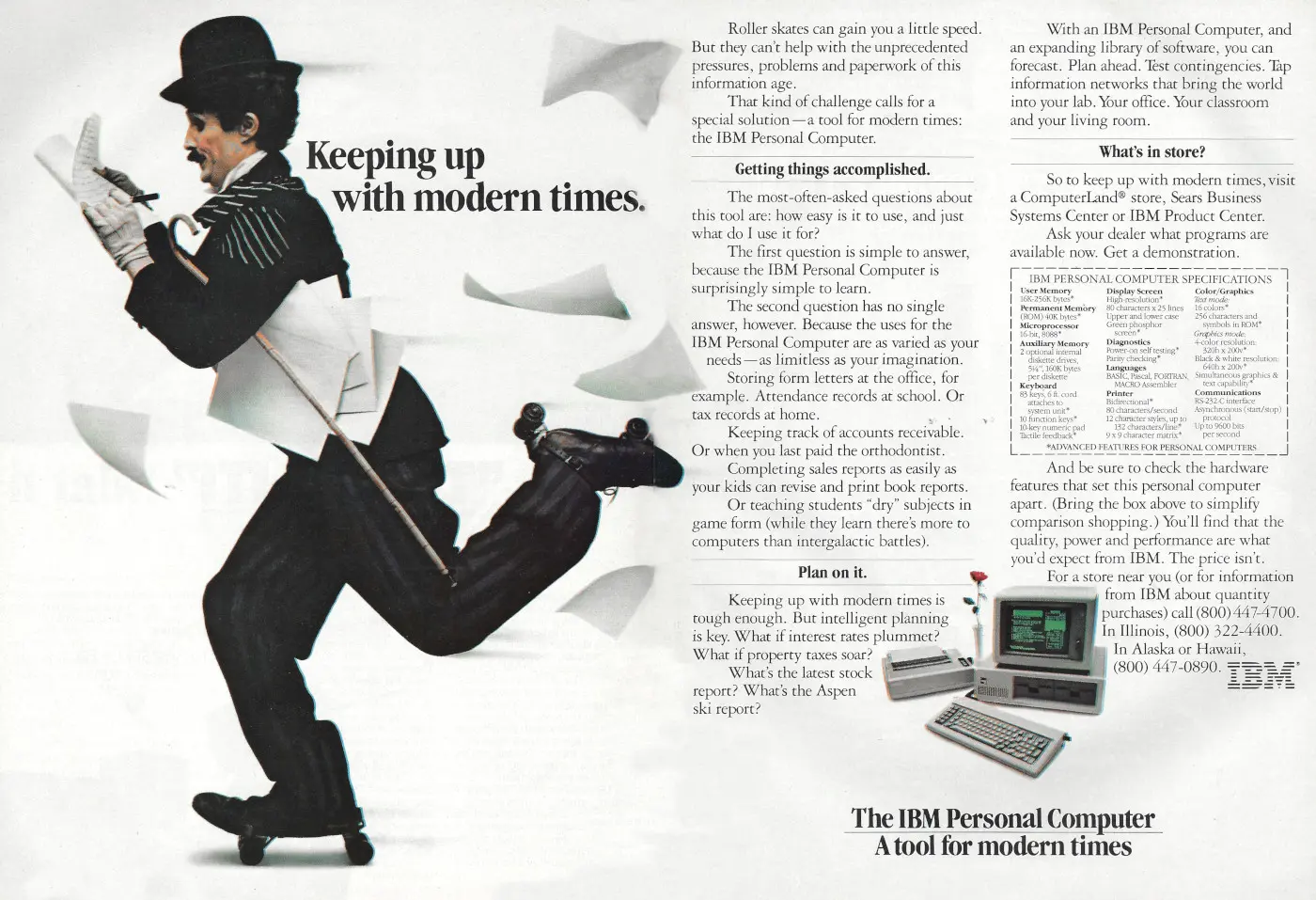
The IBM Personal Computer: A tool for modern times
This is an advert for the original 5150 IBM PC, possibly the model which more than any other defined personal computers for a generation or two.
Even the term "personal computer" (or PC), which had once refered to anything that could sit on a desk or be plugged into a television, has come to mean specifically a computer compatible with the IBM PC format.
Unfortunately for IBM, its quickly cobbled-together machine was made out of off-the-shelf parts with only the BIOS - the "Basic Input/Output System" that allowed the machine to actually start up - being proprietary.
This, however, was soon reverse-engineered which meant that suddenly other companies could produce clones of the IBM and pretty much commodotise the "PC" computer market, especially as Microsoft was already selling more-or-less the same operating system used on the IBM - PC-DOS - as a stand-alone product called MS-DOS.
Before long, it was only banks and corporates who bought actual IBMs - the quote "no one got fired for buying IBM" remaining popular in the 80s.
The 5150 was not without issues: the display was prone to flashing, for which IBM added the fix of making the phosphor in its monitors extra persistant.
It also suffered from power-supply-related issues, with the built in 60 Watt power unit proving incapable of reliably running the machine plus a serial and video card without overheating.
There was a good business to be had in producing PSU upgrades[1].
And it was certainly not efficiently designed, at least when compared to something like Sinclair's Spectrum, as Uncle Clive was quick to point out in an interview with Practical computing whilst the IBM was still unavailable officially in the UK.
Sinclair had a particular - almost hubristic - belief in the value of elegant and "advanced design" as a way of defending his relatively tiny company against the global behemoths such as Big Blue.
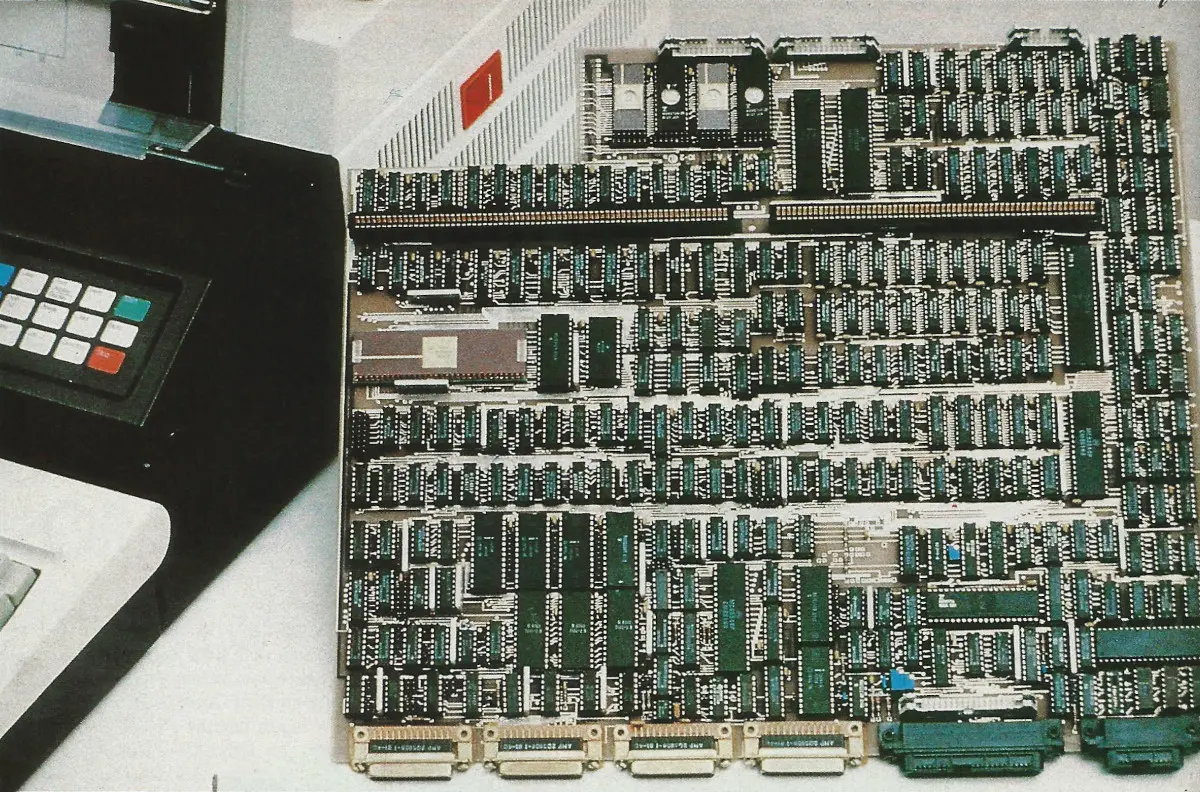
Not an IBM PC, but IBM's "instrumentation machine" project built around a Motorola 68000 CPU, showing a huge number of chips. From Personal Computer World, March 1983
He also reckoned that IBM was at a huge disadvantage because of its size and suggested that in a one-to-one confrontation Sinclair would win, at least on the grounds of elegance. Sinclair continued:
"If you take [the Spectrum] apart, and theirs, you will see that theirs is very old technology. On the outside the IBM PC may look elegant but inside it is board after board after board of chips. The cost of making it must be astronomical. Open one up - it is unelieveable. They have a board about the size of a large coffee-table book with God knows how many chips on it, it must be a hundred, just to do colour. We do it on one chip".
Conceding that big companies simply couldn't make innovative steps and had to make the best of the time available to them, given that they were playing catch-up, Sinclair suggested that
"In the same way that the big motor-car companies will not be the leaders in electric cars, just as the big yacht companies were not the people that built the steamers, just as the great train people were not the people that made the cars, just as they in turn were not the people who built the planes. Every time there is a new technology, a new generation of companies comes along"[2].
That 1982 quote sums up nicely that so-called "disruption", which of course is something only post-millenial companies run by people with beards can do, is nothing new and has always been the way of business.
--
A famous meme suggests that Bill Gates once said that "640K was enough for anyone", so a 1MB limit would seem a quite generous. However, the quote never happened and Gates has spent a lot of time since denying it[3].
Date created: 05 January 2024
Last updated: 11 December 2024
Hint: use left and right cursor keys to navigate between adverts.
Sources
Text and otherwise-uncredited photos © nosher.net 2025. Dollar/GBP conversions, where used, assume $1.50 to £1. "Now" prices are calculated dynamically using average RPI per year.
